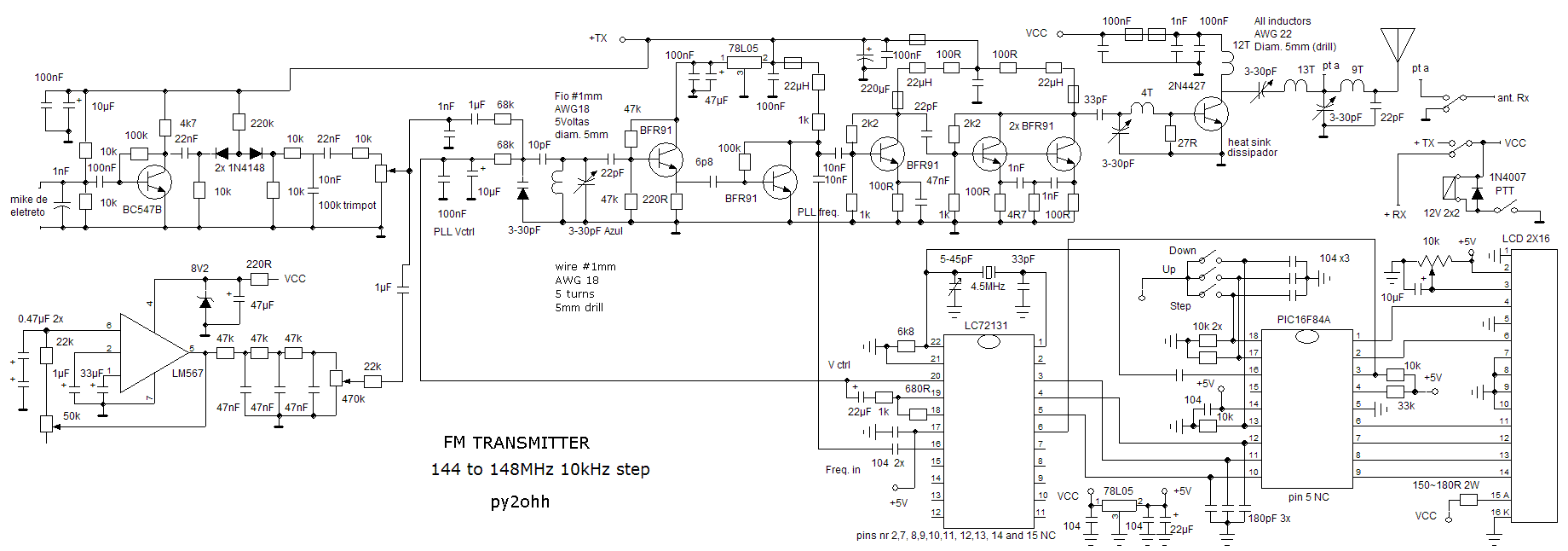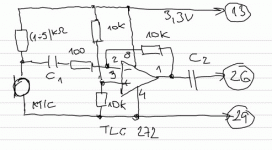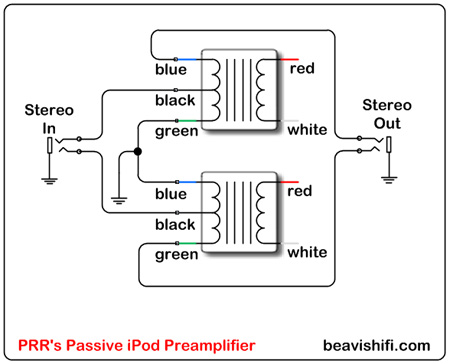
iPod FM transmiter

Electronics-DIY provides instructions for constructing a simple portable FM transmitter that enables an iPod to broadcast music over radio waves. The assembly is straightforward and can be housed within a mouse case. The device operates easily, featuring a power switch located at the bottom for activation, along with the ability to tune both the radio and transmitter to the appropriate frequency.
The portable FM transmitter circuit consists of several key components that facilitate its operation. At the core of the circuit is an oscillator, typically based on a transistor or an integrated circuit (IC), which generates the RF signal. The oscillator's frequency can be adjusted using a variable capacitor or an inductor, allowing the user to choose a specific frequency for broadcasting.
Power supply requirements for the circuit can be met using a small battery, such as a 9V battery, which can be housed within the mouse case. A power switch is integrated into the circuit to allow users to turn the device on and off conveniently.
The audio input for the transmitter is connected to the headphone jack of the iPod. This connection is typically made through a coupling capacitor, which blocks any DC component from the audio signal while allowing the AC audio signal to pass through. The audio signal modulates the RF signal generated by the oscillator, creating an FM signal that can be transmitted over the airwaves.
To ensure effective transmission, an antenna is connected to the output of the oscillator. A simple wire antenna can be used, which can be adjusted for optimal performance depending on the desired range of the transmitter. The design should also include a low-pass filter to eliminate any unwanted harmonics generated during the modulation process, ensuring that only the desired frequency is transmitted.
The tuning process involves adjusting both the transmitter and the receiving radio to the same frequency. This can be accomplished by using a small variable resistor or potentiometer within the circuit to fine-tune the oscillator frequency, ensuring clear audio reception on the radio.
Overall, this portable FM transmitter offers a practical and enjoyable project for electronics enthusiasts, allowing for the wireless transmission of audio from an iPod to a standard FM radio.Electronics-DIY has instructions on how to build a simple portable FM transmitter that would allow your iPod to broadcast music over radio waves. It is simple to build and fits into a mouse case. It works quite easy, there is a power switch on the bottom to turn it on and tune your radio and transmitter to the right frequency.
For the. 🔗 External reference
The portable FM transmitter circuit consists of several key components that facilitate its operation. At the core of the circuit is an oscillator, typically based on a transistor or an integrated circuit (IC), which generates the RF signal. The oscillator's frequency can be adjusted using a variable capacitor or an inductor, allowing the user to choose a specific frequency for broadcasting.
Power supply requirements for the circuit can be met using a small battery, such as a 9V battery, which can be housed within the mouse case. A power switch is integrated into the circuit to allow users to turn the device on and off conveniently.
The audio input for the transmitter is connected to the headphone jack of the iPod. This connection is typically made through a coupling capacitor, which blocks any DC component from the audio signal while allowing the AC audio signal to pass through. The audio signal modulates the RF signal generated by the oscillator, creating an FM signal that can be transmitted over the airwaves.
To ensure effective transmission, an antenna is connected to the output of the oscillator. A simple wire antenna can be used, which can be adjusted for optimal performance depending on the desired range of the transmitter. The design should also include a low-pass filter to eliminate any unwanted harmonics generated during the modulation process, ensuring that only the desired frequency is transmitted.
The tuning process involves adjusting both the transmitter and the receiving radio to the same frequency. This can be accomplished by using a small variable resistor or potentiometer within the circuit to fine-tune the oscillator frequency, ensuring clear audio reception on the radio.
Overall, this portable FM transmitter offers a practical and enjoyable project for electronics enthusiasts, allowing for the wireless transmission of audio from an iPod to a standard FM radio.Electronics-DIY has instructions on how to build a simple portable FM transmitter that would allow your iPod to broadcast music over radio waves. It is simple to build and fits into a mouse case. It works quite easy, there is a power switch on the bottom to turn it on and tune your radio and transmitter to the right frequency.
For the. 🔗 External reference





